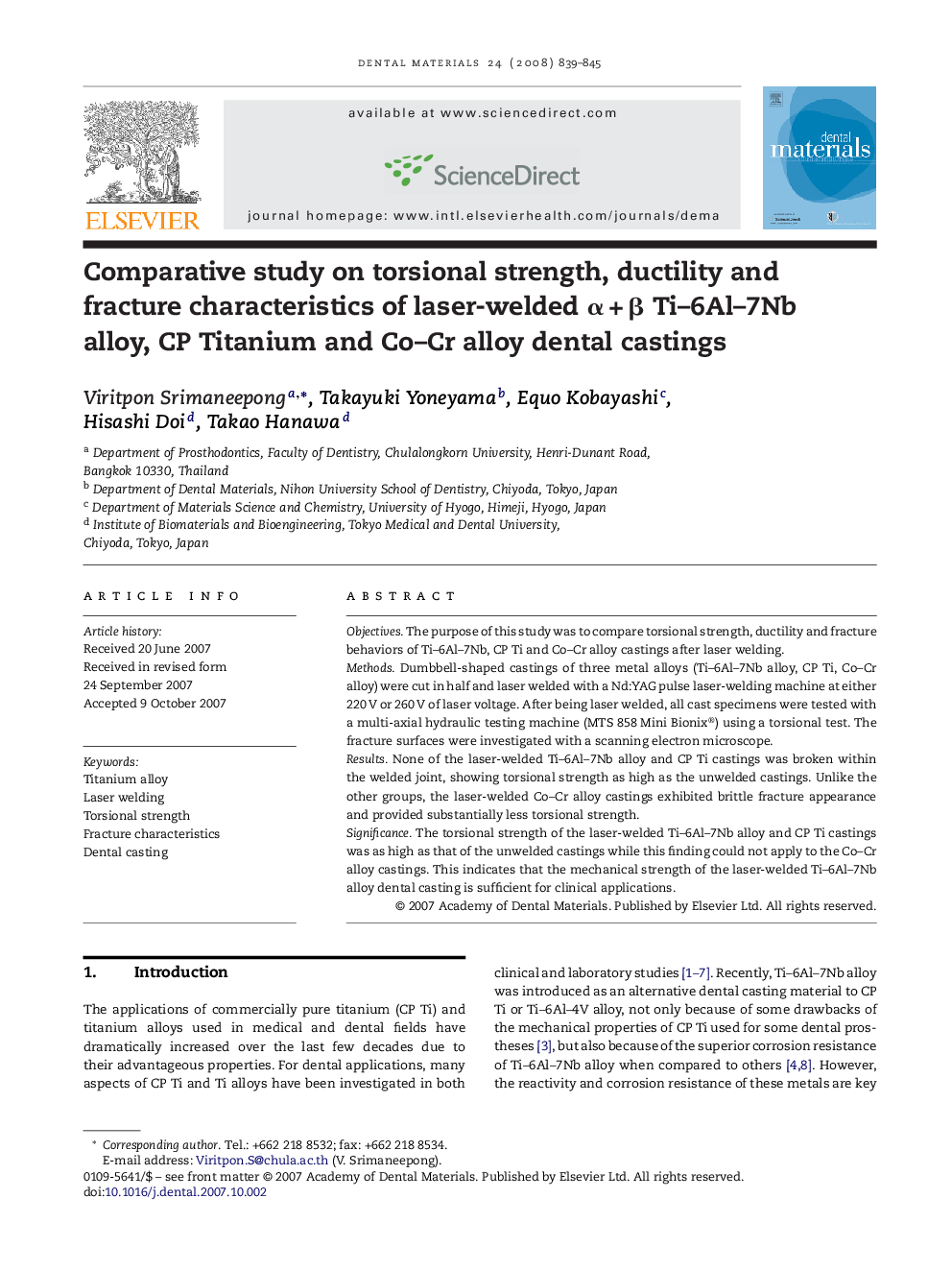| Article ID | Journal | Published Year | Pages | File Type |
|---|---|---|---|---|
| 1423144 | Dental Materials | 2008 | 7 Pages |
ObjectivesThe purpose of this study was to compare torsional strength, ductility and fracture behaviors of Ti–6Al–7Nb, CP Ti and Co–Cr alloy castings after laser welding.MethodsDumbbell-shaped castings of three metal alloys (Ti–6Al–7Nb alloy, CP Ti, Co–Cr alloy) were cut in half and laser welded with a Nd:YAG pulse laser-welding machine at either 220 V or 260 V of laser voltage. After being laser welded, all cast specimens were tested with a multi-axial hydraulic testing machine (MTS 858 Mini Bionix®) using a torsional test. The fracture surfaces were investigated with a scanning electron microscope.ResultsNone of the laser-welded Ti–6Al–7Nb alloy and CP Ti castings was broken within the welded joint, showing torsional strength as high as the unwelded castings. Unlike the other groups, the laser-welded Co–Cr alloy castings exhibited brittle fracture appearance and provided substantially less torsional strength.SignificanceThe torsional strength of the laser-welded Ti–6Al–7Nb alloy and CP Ti castings was as high as that of the unwelded castings while this finding could not apply to the Co–Cr alloy castings. This indicates that the mechanical strength of the laser-welded Ti–6Al–7Nb alloy dental casting is sufficient for clinical applications.
